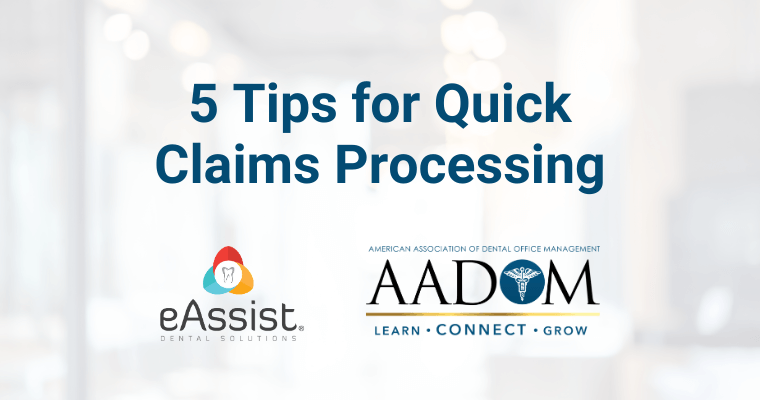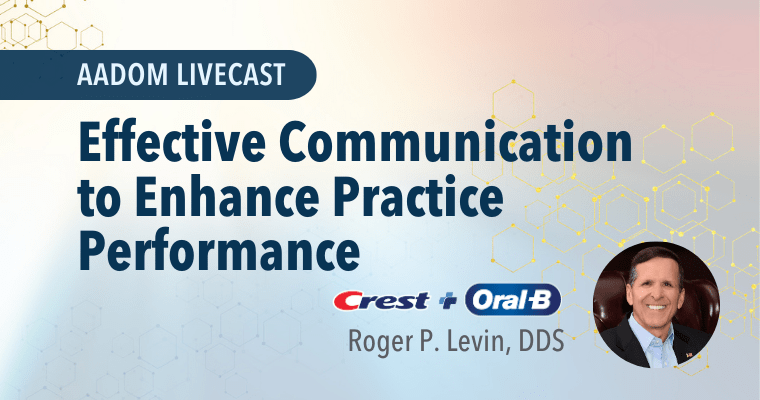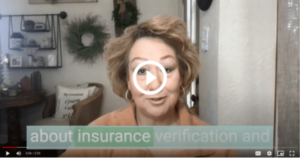5 Tips for Quick Claims Processing

In an ideal world dental billing would be a fast and seamless process. We submit a claim to the insurance and just sit back and wait a couple of weeks for the payment to roll in. Too often that’s not what happens and instead of a check we get a request for more information or, worse, a denial. Before we know it, that quick claim is taking months to process and our AR is fast approaching the 90 day mark. That doesn’t always need to be the case and, to help, here are 5 ways to help a claim get processed quickly.
Insurance Verification
When a patient comes through the door, often the first item obtained is their insurance card, but this alone tells us very little about their actual coverage. It’s imperative to always verify the coverage…Click to open link in new tab… with the insurance company as there are multiple scenarios that could impede a quick claim transaction. It could be an old card that they forgot to replace and the coverage has since been terminated. They may have reached their annual maximum benefits and owe more money out of pocket. The treatment may not be covered under their particular plan or the plan may need the treatment to be pre-authorized. All these scenarios and more will be answered when we contact the insurance company to verify coverage.
Dual Coverage
Once upon a time one insurance card would suffice, but today many patients have dual coverage, and often they may not think to tell us about both of their plans. We should always check to see if there is secondary coverage. The patient may be covered under a spouse or a parent in addition to their own plan. They may have both Medicare and a supplemental plan. They may be a government employee which requires both the federal medical and dental plans be billed. When both primary and secondary coverage plans are available, the faster we have verified coverage with both, the faster we get paid.
ADA Claims Form
When it comes to claims submission insurance companies require a correctly completed ADA claim form. Any error, no matter how minor, can cause a delay and it’s best to go over it with a fine toothed comb. We should always double check the patient info and make sure their name matches what’s on the insurance card, their correct address is listed and their correct date of birth is provided. The treatment needs to be reviewed to ensure the correct CDT Codes…Click to open link in new tab… are billed. Finally, the treating doctor needs to be listed with the current and correct credentialing information.
Attachments
Very rarely is a claim submitted without any attachments. Some plans require pre-authorization and others, namely HMO’s, require referrals for specialty treatment. Most require clear x-rays showing the exact teeth involved in treatment and a detailed, concise doctor narrative explaining why the procedure was necessary. Specialty treatment requires additional attachments such as a periodontal chart for any periodontal treatment. The more pertinent attachments provided the more chance of the claim being processed quickly.
Outsourcing
The ultimate way to get claims paid quickly and stress-free is to outsource your claims processing to experienced insurance claim specialists. Dental offices are full of distractions with numerous patients coming in and out the door on a daily basis. These distractions can pull focus from dental billing and lead to potential errors and missed opportunities with insurance claims. At eAssist…Click to open link in new tab…, experienced Success Consultants are happy to help get claims paid quickly and efficiently so that more time can be spent serving patients. To learn more, click here…Click to open link in new tab….
About the Author

Racheal Grant, eAssist Business Development Specialist
Racheal Grant has been in the dental industry for 19 years, starting as a dental assistant. She expanded to dental administration, giving her a comprehensive knowledge of how dental practices operate. She joined eAssist in 2015, helping dental practices streamline their processes and increase revenue. Now, as an eAssist Business Development Specialist, she helps dental practice owners and office managers identify pain points and discover how eAssist can help streamline revenue so that the practice can be successful.





